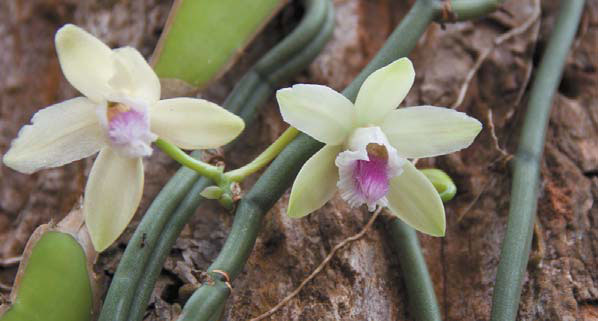Island keen to keep its flavor
The world's finest natural vanilla is, without question, grown in Madagascar. Commonly known as Madagascar bourbon, it is considered the gold standard by which all other vanillas are measured. Black and oily, Madagascar bourbon is famed for its delicate floral aroma with strong cocoa notes and in contrast to artificial vanilla, has a complex taste with more than 200 specific components. Due to its unmatched reputation, it is in great demand around the world.
Vanilla is in fact a Mexican orchid and was purportedly used by the Aztecs as a flavoring in their cocoa drinks. It was first taken to Europe by the conquistadors and then by the French to Mauritius, eventually reaching Madagascar in 1871. It is a notoriously challenging plant to cultivate making it the world's second most expensive crop after saffron.
Whereas in Mexico pollination occurs naturally thanks to a tiny native bee, elsewhere pollination has to be carried out by hand, a labor intensive and skilled occupation made all the more difficult because the vanilla orchid flowers only one day a year, with a blossom so delicate that is has to be pollinated within hours before it is damaged by the sun's rays. In addition, although Madagascar offers the tropical heat and humidity vanilla requires, that brings with it a vulnerability to disease and extreme weather. In 2000, for example, a cyclone devastated almost the entire East Asia crop resulting in prices peaking at nearly $500 per kilogram a couple of years later.
As well as producing the finest vanilla, Madagascar has been the world's dominant natural vanilla producer for several years. The country's 80,000 vanilla farmers, largely based along Madagascar's "vanilla coast" that stretches from the lush northeast towns of Sambava and Antalaha down to Maroantsetra in the Bay of Antongil, consistently produce between 1,500 and 2,000 tons of the crop, accounting for between 65 to 85 percent of the world's supply.
Despite Madagascar's unrivalled reputation for high quality vanilla, the global vanilla market is plagued by extreme price volatility. Following an all-time spike in 2002, prices quickly fell as a result of more market entrants, particularly from Indonesia, India and Uganda, reaching a historical low of $7.5 per kg in 2007. Between 2009 and 2011, many producing countries began to stockpile their vanilla production in the hope of speculating on improved prices in the future. By the end of 2012, as stocks depleted amid falling global production and increased demand, prices began recovering reaching levels between $80 to $120 per kg, a level considered sustainable, if still on the low side.
A number of other challenges remain. Speculation is expected to continue prompting more growers and curers to vacuum pack their crop. While this facilitates long term storage, the process can lead to a deterioration in the quality of the beans, and there have been instances where significant levels of produce have remained unsold due to quality concerns. Additionally, only 5 percent of Madagascar's vanilla farmers process their vanilla and with little attention to fertilizer use and soil conservation, yields are low. There is also no national level seed bank to develop high quality genetic material.
But chief among the industry's concerns is the misuse of the term "natural" vanilla. With low production and high prices, artificial vanilla is used in 98 percent of flavorings and fragrances. Although artificial vanilla is often marketed as identical to natural varieties, it is in fact synthesized from petroleum derivatives. In the United States, where 70 percent of the world's vanilla is exported to, the North American Vanilla Bean Importer's Association was set up to improve labeling to allow differentiation between natural and artificial vanilla. Progress is being made. Ben & Jerry's, for example, has phased out the use of the term "all natural" in ice creams that contain artificial ingredients.
Although official figures have yet to be published, the 2014 harvest showed signs of optimism. Production exceeded 1,800 tons, levels not seen since 2010, and the rate of vanillin, used to measure the concentration and quality of the beans, is expected to be higher than in previous years. It is too early to estimate prices for this year since they are in large part dependent on the 2016 crop, but since November prices have risen due to strong global demand and lower expectations for this year's crop.
The future of vanilla production in Madagascar is in no small part dependent on political will. The new administration insists there is recognition at the highest levels that with vanilla accounting for 4 percent of Madagascar's exports, it is in the interest of all stakeholders to address the industry's challenges, enabling farmers to capitalize on Madagascar bourbon's unmatched reputation.
Asia International Reports Ltd provided the story.
|
Madagascar is the world's largest exporter of natural vanilla. Photo Provided To China Daily |
(China Daily 04/22/2015 page19)















